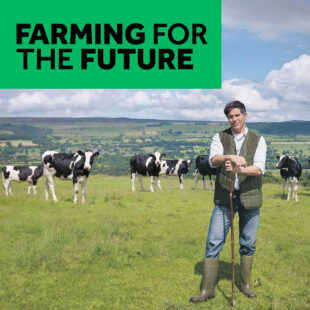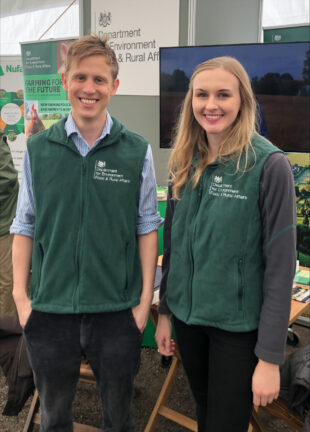https://defrafarming.blog.gov.uk/provide-ryegrass-seed-set-for-birds-over-winter/
Provide ryegrass seed-set for birds over winter
The guidance on this page is for SFI pilot participants only. Please visit GOV.UK for the official Sustainable Farming Incentive scheme guidance.
Find out how land managers can provide ryegrass seed as overwinter food for birds.
If you’re completing this action as part of the Sustainable Farming Incentive pilot, how you do it is up to you.
The advice on this page can help you get better environmental and business benefits, but you do not have to follow it to get paid.
About providing seed for birds over winter
You can help increase survival rates of declining, seed-eating birds by allowing ryegrass to set seed in late winter through to early spring. Providing ryegrass seed will help birds entering the breeding season, because natural seed food has often run out by January.
Ryegrass seed plots provide food for birds in grass dominated landscapes, where seed rich arable crops are scarce. They stay on the plant into early spring, providing overwinter food from late winter to mid-March.
Ryegrass seeds are large, abundant and easily collected by birds, making them a valuable food source. Italian and hybrid ryegrasses are best because they produce seeds more consistently. You can also use perennial ryegrass.
You can create seeded ryegrass on a whole or part-field basis, particularly on holdings or in areas that have:
- existing populations of buntings
- dense hedges and scrub suitable for nesting birds
- invertebrate-rich habitat that provides chicks with food in spring and summer
The benefits of leaving ryegrass to seed-set
Your farm business can benefit from not cutting the ryegrass sward. You can:
- promote sward regeneration without the need to plough and reseed
- reduce labour and fuel costs
- increase carbon storage in the soil
Different ryegrass locations will attract a range of bird species, such as:
- tree sparrows and yellowhammers, on plots near hedges
- open-country birds like skylarks, corn buntings and grey partridge on plots away from hedges
Other wildlife, including invertebrates and small mammals, will also eat ryegrass seeds.
How to leave ryegrass crop areas to set seed
To provide overwinter food for birds you should:
- leave ryegrass to set seed on at least 2% of farmed land
- create plots of at least 0.5ha
- spread your plots across your farm, up to 500 metres apart, to maximise use by birds
- leave the plots in the same place for a few years, or rotate them
- aim for about 400 to 500 seed heads per square metre in an open sward structure
- create field edge strips that are at least 10 metres wide and away from busy roads which disturb birds
- aim for at least 75% of the grassland plot to be dominated by ryegrass
Leave ryegrass-dominated grassland uncut and ungrazed in the summer to produce adequate seed. The timing will depend on which ryegrass species dominates the sward. You can cut and graze:
- perennial ryegrass until the end of May
- Italian and hybrid ryegrass until the end of June
Do not disturb the vegetation after you’ve stopped cutting or grazing, until the following March. Avoid access by people, animals and vehicles.
How to maintain ryegrass seed-set plots
Where you’re leaving the ryegrass in place, you can improve next year’s yield by either:
- harrowing the field
- clear cutting the field and removing the cuttings to reduce nutrient build-up
Do this in March or April to produce good vegetation for grazing the following spring.
How you’ll know if you’ve been successful
You’ll see:
- ryegrass seeds available throughout the winter months
- seed-eating birds regularly on the plot in winter


